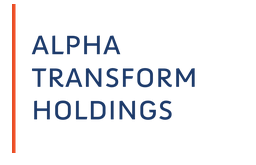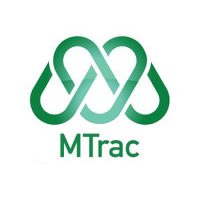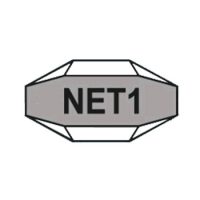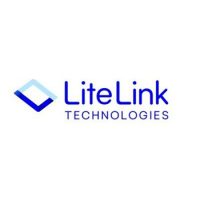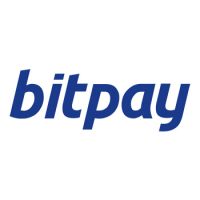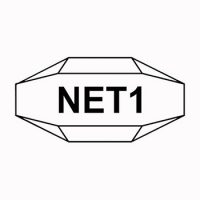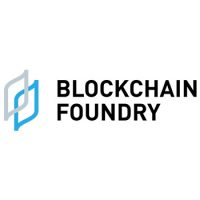Blockchain
World Quantum Computers and Blockchain Mechanism Analysis Report 2022: Discussions of Quantum-Enabled Blockchain Architectures Based on Quantum Random Number Generators and Quantum Key Distribution

The “The Quantum Threat to Blockchain: Emerging Business Opportunities” report has been added to ResearchAndMarkets.com’s offering.
This report identifies the challenges and opportunities that arise from the threat that quantum computers pose to the “blockchain” mechanism that makes cryptocurrencies viable as a form of money as well as playing an important role in future “smart contracts,” novel supply chain strategies and other innovative deployments of IT.
That quantum is a major threat going forward is beyond doubt. According to a recent study by the consulting firm Deloitte, approximately one-fourth of the Bitcoin in circulation in 2022 is vulnerable to quantum attack. The White House National Security Memorandum/NSM-10, released on May 04, 2022, indicated the urgency of addressing imminent quantum computing threats and the significant risks to the economic and national security of the United States.
Although the main focus of this report is on the quantum threat to the integrity of cybercurrencies, the applicability of blockchain (and therefore the threat of quantum) is much broader than the newer types of money. Blockchain technology has been proposed for a wide range of transactions, including insurance, real estate, voting, supply chain tracking, gambling, etc.
A quantum computer-compromised blockchain would allow eavesdropping, unauthorized client authentication, signed malware, cloak-in encrypted session, a man-in-the-middle attack (MITM), forged documents, and emails. These attacks can lead to mission-critical operations disruption, reputation, and trust damage, as well as loss of intellectual property, financial assets, and regulated data. Note that this report covers both technical and policy issues relating to the quantum vulnerability of blockchain.
As things stand now, blockchains are secured with relatively garden-variety encryption schemes. However, quantum computers will have the computational power to break these schemes as they grow in power. Predictions of when quantum computers will attain such power vary from five years to never, but, the threat hangs over the cryptocurrency industry as a whole and is a dampener to its prospects.
Quantum computers directly threaten classical public-key/private key cryptography blockchain technologies because they can break the computational security assumptions of elliptic curve cryptography. They also significantly weaken the security of critical private key or hash function algorithms, which protect the blockchain’s secrets.
Also, some of the early expenditures on quantum-safe technology in the cybercurrency market will undoubtedly go to protecting data from attacks later, when quantum computing resources become mature. This issue becomes more important as we grow closer to the day when powerful quantum computers become a reality. But preemptive action on the quantum threat means that the business opportunities in this space are emerging right now.
As this report makes clear, the publisher sees major commercial opportunities to protect blockchain and the technologies dependent on blockchain against future quantum computer intrusions. One area that this report focuses on especially is post-quantum encryption (PQC), in which relatively traditional encryption schemes are devised that are simply much harder to break than currently used encryption schemes.
With NIST announcing a new set of PQC standards in July 2022, the publisher believes that PQC firms will be receiving major investments in the near term as a result of the growing concerns about bad actors with access to quantum computing resources.
The publisher believes there is also a need for relatively low-cost information-theoretically secure (ITS) solutions that instantly strengthen standardized cryptography systems used in blockchains. Thus, this report also discusses quantum-enabled blockchain architectures based on Quantum Random Number Generators (QRNG) and Quantum Key Distribution (QKD).
Key Highlights:
- With NIST announcing a new set of PQC standards in July 2022, PQC firms will soon be receiving major investments in the near term much of which will apply to blockchain. However, not all NIST-based PQC solutions will be feasible for blockchain use. Given the nature and intricacy of PQC, it will take years of planning for a successful migration to PQC-backed Blockchain protection.
- The earliest of expenditures on quantum safe technology in the block chain market will go to protecting data from attacks later, when quantum computing resources become mature. This issue becomes more important as we grow closer to the day when powerful quantum computers become a reality. But data theft today requires preemptive action. The quantum threat to the blockchain means that business opportunities in this space are emerging right now.
- There is a need for low-cost information-theoretically secure (ITS) solutions that instantly strengthen standardized cryptography systems used in blockchains. Already much discussed in this context are quantum-enabled blockchain architectures based on Quantum Random Number Generators (QRNG) and Quantum Key Distribution (QKD). Another important concept is quantum-enabled blockchain, which refers to an entire blockchain or some aspects of the blockchain functionality being run in quantum computing environments.
- Mining is another aspect of blockchains vulnerable to quantum attacks. Mining is the consensus process that certifies new transactions and keeps blockchain activities protected. One risk with mining is that miners using quantum computers could launch a 51% attack. A 51% attack is when a single entity controls more than half of the computational power of the blockchain. A quantum attack on mining would undermine the network’s hashing power.
Key Topics Covered:
Chapter One: Introduction
1.1 Objective and Scope of this Report
1.1.1 The Threat of Quantum Computers to Blockchain
1.2 Cryptography Background to this Report
1.2.1 Concerned Organizations
1.2.2 NIST PQC Efforts and Beyond
1.2.3 Addressable Market for Quantum-safe Cybercurrency
1.3 The Goals of this Report
Chapter Two: Classical Blockchain Cryptography and Quantum Computing Attacks
2.1 Overview of the Quantum Threat
2.2 NIST and Post-quantum Cryptography
2.2.1 Structure of the NIST PQC Effort
2.2.2 Importance of Asymmetric Digital Signatures
2.2.3 Impact of Doubling Key Size
2.2.4 Algorithm Security Strength
2.3 Advanced Encryption Standard (AES)
2.4 Quantum Attack Resources Estimates to Break ECC and DSA
2.5 Quantum Resistant Cryptography for Blockchains
2.5.1 Taproot and Bitcoin Core
2.5.2 Impact of NIST-based PQC Algorithms
2.6 Post-quantum Random Oracle Model
2.6.1 Modeling Random Oracles for Quantum Attackers
2.7 Summary of this Chapter
Chapter Three: Quantum Opportunities of the Blockchain Kind
3.1 Blockchain Basics
3.1.1 What are Classical Blockchains?
3.2 Quantum-Enabled Blockchain
3.2.1 Role of Quantum-safe Security Technologies
3.3 Blockchain Security
3.3.1 Role of Conventional Cryptography
3.3.2 Attacks on Classical Cryptography
3.3.2.1 Some Known Attacks Against ECDSA
3.3.2.2 ECDSA Key Pair Generation:
3.3.2.3 Signature Computation:
3.3.2.4 Recommendations:
3.3.2.5 Blockchain Security Summary:
3.4 Mitigating Cyberattacks on Blockchains
3.5 Blockchain Security: Entropy/Randomness
3.5.1 Examples of Low Entropy Attacks
3.6 Random Number Generator Product Evolution
3.6.1 PRNGs
3.6.2 TRNGs
3.6.3 QRNGs
3.6.4 OpenSSL 3.0
3.7 Summary of this Chapter
Chapter Four: Quantum Impacts on the Cryptocurrency Business
4.1 Qubit and Quantum Gates
4.1.1 Qubits
4.1.2 Quantum Gates
4.1.3 Quantum Fourier Transform
4.1.4 Oracle
4.1.5 Amplitude Amplification
4.2 Quantum Algorithms
4.2.1 Shor’s Algorithm
4.3 Specific Quantum Threat to Blockchains
4.3.1 Risk of Quantum Attack in Authentication
4.3.2 Grover’s Algorithm and Hashing
4.4 Risk of Quantum Attack in Mining
4.5 Nonce Attacks
4.6 Blockchain Data Structures
4.7 Summary of this Chapter
Chapter Five: Quantum Hash and QKD
5.1 Classical to Quantum Hashing Functions
5.1.1 Summary: Quantum Hashing Functions
5.2 Quantum Key Distribution (QKD)
5.2.1 Technical Issues
5.2.2 Issues Needing Work in Blockchain Enabled QKD
5.2.2.1 Summary: QKD Technical Issues and Blockchain Integration
5.2.2.2 Software-defined Networking QKD and Blockchain
5.3 Notes on Interface Protocols
5.3.1 Southbound Interface
5.3.2 Northbound Interface Protocol
5.3.3 Resource Allocation
5.4 Steps Blockchain Organizations Can Take Now
5.5 Summary of this Chapter
Blockchain
Alpha Transform Holdings Releases March Report on ASC AI Index
Blockchain
Elizabeth Warren Urges Treasury Secretary Yellen to Implement Strong AML/CFT Measures for Stablecoins

In a recent communication directed to Treasury Secretary Janet Yellen, US Senator Elizabeth Warren has strongly advocated for the incorporation of robust Anti-Money Laundering and Combating the Financing of Terrorism (AML/CFT) measures specifically tailored for stablecoins. Senator Warren’s correspondence underscores the critical importance of adopting the full array of AML tools outlined by the Treasury Department in a prior November 2023 communication to Congress.
Senator Warren has underscored the burgeoning threat posed by cryptocurrencies, particularly stablecoins, to national security. She has specifically drawn attention to instances where entities like Iran and Hamas have turned to cryptocurrencies as a means to raise funds and support terrorist activities. To effectively address this evolving threat landscape, Senator Warren asserts that any forthcoming crypto legislation must encompass comprehensive AML/CFT authorities as requested by the Treasury Department.
Moreover, Senator Warren has made reference to the testimony provided by Deputy Secretary Adewale O. ‘Wally’ Adeyemo before the Senate Committee on Banking, Housing, and Urban Affairs. In this testimony, Adeyemo emphasized the critical need for additional AML authorities to combat the growing menace posed by cryptocurrencies. Senator Warren has pointed out that the exclusion of crucial actors within the digital asset ecosystem, such as miners and validators, from AML/CFT requirements could potentially enable nefarious actors to exploit the increased crypto trading facilitated by stablecoin legislation.
Senator Warren’s steadfast stance on the regulation and oversight of cryptocurrencies is aligned with her prior efforts aimed at curbing illicit activities and safeguarding consumers, the financial system, and national security interests. She has persistently advocated for the closure of loopholes in AML regulations that allow sanctioned entities like Iran to derive revenue through crypto transactions. Furthermore, Senator Warren has consistently voiced concerns regarding the exploitation of cryptocurrencies in terrorist financing schemes and has called for the implementation of stronger regulatory frameworks to protect both consumers and national security interests within the realm of stablecoin-related legislation.
Source: blockchain.news
The post Elizabeth Warren Urges Treasury Secretary Yellen to Implement Strong AML/CFT Measures for Stablecoins appeared first on HIPTHER Alerts.
Blockchain
Binance Launches Megadrop: A Token Launch Platform with Airdrops and Web3 Quests

Binance has rolled out Binance Megadrop, a novel token launch platform that blends airdrops with Web3 quests. This platform enables users to engage in BNB Locked Products subscriptions and complete tasks within their Web3 Wallet to earn early rewards from chosen Web3 projects, even before their tokens hit the Binance Exchange.
The inaugural project featured on Binance Megadrop is BounceBit (BB), a BTC restaking chain. Here are the token specifics for BounceBit: Max Token Supply: 2,100,000,000 BB, Megadrop Token Rewards: 168,000,000 BB (8% of max token supply), Initial Circulating Supply: 409,500,000 BB (19.5% of max token supply).
To kickstart their journey with Binance Megadrop, users must log into their Binance account and ensure they possess an active Binance Web3 Wallet. From there, they can subscribe to BNB Locked Products and/or fulfill Web3 Quests to accumulate scores. These scores dictate the rewards received through the Megadrop program.
The scoring mechanism for Megadrop relies on the Locked BNB Score, determined by the quantity of BNB subscribed and the subscription period’s duration. Users also earn a Web3 Quest Bonus and a Web3 Quest Multiplier upon completion of designated Web3 Quests. The total score is computed by applying the Web3 Quest Multiplier to the Locked BNB Score and adding the Web3 Quest Bonus.
Importantly, only wallets created within the Binance Web3 Wallet and not external wallets will count towards Megadrop participation. Megadrop rewards will be airdropped to users’ Binance Spot Wallets.
Users must undergo identity verification and maintain at least one active Binance Web3 Wallet to qualify for Megadrop rewards. Additionally, certain jurisdiction-based eligibility criteria apply. Users from Australia, Canada, Cuba, Crimea Region, Hong Kong, Iran, Japan, New Zealand, Netherlands, North Korea, Russia, Singapore, Syria, United Kingdom, United States of America, and its territories are presently ineligible to participate in BB Megadrop.
Binance Megadrop is aimed at offering users an interactive and rewarding experience within the crypto realm. Further details regarding the Megadrop amount, Web3 Quests, and the comprehensive listing plan will be disclosed separately.
Source: blockchain.news
The post Binance Launches Megadrop: A Token Launch Platform with Airdrops and Web3 Quests appeared first on HIPTHER Alerts.
-
Blockchain7 days ago
THXLAB and IZUTSUYA Announce Strategic Partnership
-
Blockchain3 days ago
Open-Source Intelligence (OSINT) Market is expected to reach a revenue of USD 64.9 Bn by 2033, at 25.6% CAGR: Dimension Market Research
-

 Blockchain Press Releases7 days ago
Blockchain Press Releases7 days agoBitget to Take Center Stage at Blockchain Life and Token2049 Dubai
-

 Blockchain Press Releases2 days ago
Blockchain Press Releases2 days agoBybit and Franck Muller Partner with Sidus Heroes to Launch Cosmic Gears: A Pioneering Web3 Game with a $250,000 Prize Pool and Exclusive Watch Collection
-

 Blockchain Press Releases7 days ago
Blockchain Press Releases7 days agoBitrue Gears Up for 2024 Bitcoin Halving with Trading Competition
-

 Blockchain2 days ago
Blockchain2 days agoBlockchain Transforming Travel: Quantum Temple’s Innovative Venture
-

 Blockchain Press Releases7 days ago
Blockchain Press Releases7 days agoaelf Leads the Fusion of AI and Blockchain to Shape the Future of Technology
-

 Blockchain2 days ago
Blockchain2 days agoEvolution of the Blockchain World: Doric Blockchain Drives Education and Adoption of Blockchain Technology and Tokenization in Latin America















